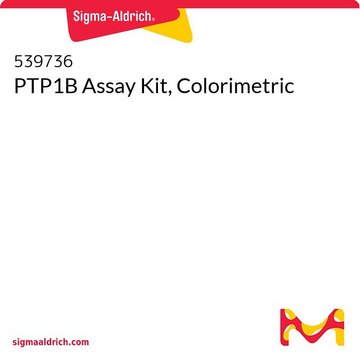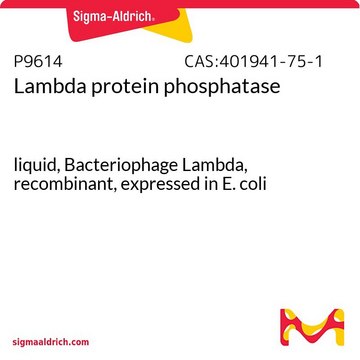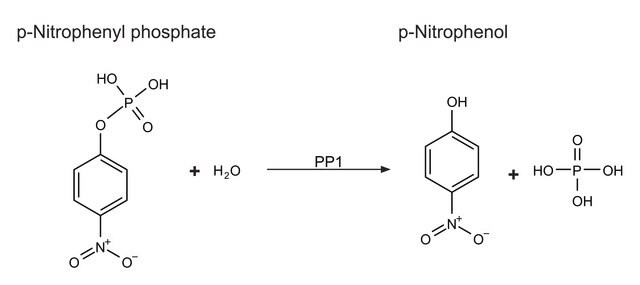539735
PTP1B, Human, Recombinant, E. coli
Synonyme(s) :
Protein Tyrosine Phosphatase 1B
About This Item
Produits recommandés
Source biologique
human
Niveau de qualité
Produit recombinant
expressed in E. coli
Pureté
≥90% (SDS-PAGE)
Forme
liquid
Activité spécifique
≥20 U/mg
Poids mol.
37,400 g/mol
Fabricant/nom de marque
Calbiochem®
Conditions de stockage
OK to freeze
avoid repeated freeze/thaw cycles
Conditions d'expédition
wet ice
Température de stockage
−70°C
Informations sur le gène
human ... PTP1B(5770)
Description générale
Recombinant, human PTP1B expressed in E. coli. PTP1B, an ubiquitous nontransmembrane protein tyrosine phosphatase, was originally identified in human placenta. This highly active enzyme is useful for the study of tyrosine phosphatase kinetics, substrate specificity, and for screening inhibitors. PTP1B comprises three domains: an N-terminal catalytic domain (1–300), a regulatory domain (301–400), and a C-terminal domain (401–435) that is accountable for directing the enzyme to the endoplasmic reticulum (ER) membrane.
Application
Actions biochimiques/physiologiques
Conditionnement
Avertissement
Définition de l'unité
Forme physique
Reconstitution
Autres remarques
Liu, F., et al. 1996. J. Biol. Chem.271, 31290.
Informations légales
Code de la classe de stockage
12 - Non Combustible Liquids
Classe de danger pour l'eau (WGK)
WGK 1
Point d'éclair (°F)
Not applicable
Point d'éclair (°C)
Not applicable
Certificats d'analyse (COA)
Recherchez un Certificats d'analyse (COA) en saisissant le numéro de lot du produit. Les numéros de lot figurent sur l'étiquette du produit après les mots "Lot" ou "Batch".
Déjà en possession de ce produit ?
Retrouvez la documentation relative aux produits que vous avez récemment achetés dans la Bibliothèque de documents.
Notre équipe de scientifiques dispose d'une expérience dans tous les secteurs de la recherche, notamment en sciences de la vie, science des matériaux, synthèse chimique, chromatographie, analyse et dans de nombreux autres domaines..
Contacter notre Service technique







